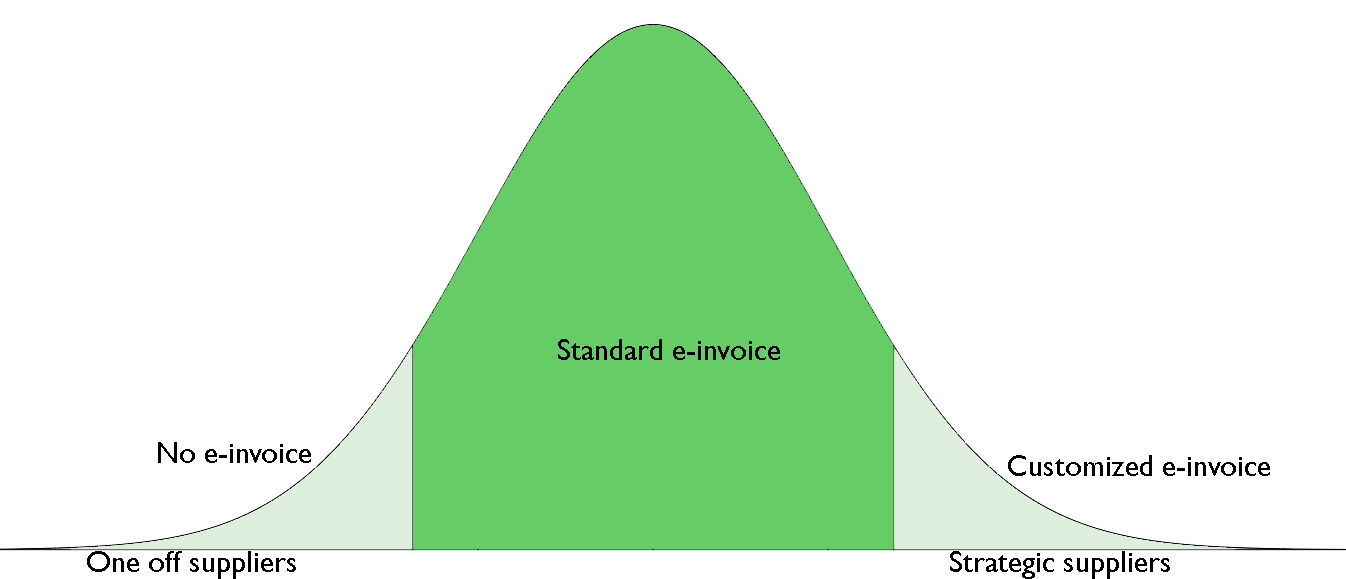18 Jan 2013 Implementing e-invoicing – what could possibly go wrong? (1)
Everyone agrees it seems. The case for implementing inbound e-invoicing is compelling. It is a simple matter of common sense. Replacing an inefficient paper process with an automated electronic process will generate savings and in the current economic environment, who would argue that it was not a good idea? It isn’t even that technically complex.
What could possible go wrong?
Well for a start – getting buy-in from the business.
 It depends where in the organization the project is led. Typically it will be led by finance or accounts payable but it could be led by a procurement function or, if there is one, a P2P team. But from wherever it is led, it is critical to get solid buy-in from a wide range of stakeholders and not just to the concept of e-invoicing, but to the approach which, whether you like it or not, will have to be uncompromising.
It depends where in the organization the project is led. Typically it will be led by finance or accounts payable but it could be led by a procurement function or, if there is one, a P2P team. But from wherever it is led, it is critical to get solid buy-in from a wide range of stakeholders and not just to the concept of e-invoicing, but to the approach which, whether you like it or not, will have to be uncompromising.
Custom requirements
Let me illustrate this with an example. You go to a group of important stakeholders and explain your e-invoicing program. Without getting technical about XML file specifications, you explain that electronic invoices will simply be electronic versions of existing invoices. Your stakeholders ask a question about a particular supplier: “Our supplier always includes the requester’s name on the invoice. This makes it easier for us to resolve issues should there be any. We’ve always done this. Will the electronic invoice include that?”
There is an answer you could offer that goes like this: “The standard file format doesn’t include a field for requester but we can customize the message for that supplier in order to accommodate your requirement.”
There’s nothing wrong with this answer. It is quite rare that supplier invoices will all match a simplified model exactly and for an e-invoice program that spans more than one country, there will certainly be local idiosyncrasies that need to be accommodated. But can you afford to accommodate them all? How do you decide which customizations you will accept and which you will reject? And, importantly, how will you keep your stakeholders on your side if you reject their requests for special treatment?
Where do you draw the line?
You can divide your suppliers into 3 groups. Low volume suppliers with whom it makes no sense to invest in establishing a new electronic relationship, strategic suppliers with whom you need to work closely to accommodate special requirements and the rest. For the rest, you need a single standard for all electronic invoices with no compromise. The success of your project is going to depend on where you draw the lines. Be too uncompromising and you could on-board many suppliers with a single simple set of business rules but you run the risk of losing support from your internal stakeholders whose requirements you are ignoring. Compromise too much with your stakeholders and you’ll build a monster – a wide range of customizations that will be expensive or impossible to support.

Setting expectations
It is vital to ensure that all stakeholder know what you are expecting of them and setting expectations at the outset is critical.
Present the commercial benefits of the e-invoicing program to your stakeholders. Ensure that they appreciate the commercial imperative and secure their buy-in to that. Once they are on side, explain how the success of the program relies on your ability to standardize processes. Explain that the commercial benefit will be greater, and achieved quicker, the further to the right we draw the line between standard and customized invoices.
It is important that there is an accepted understanding that e-invoicing means automation and automation means standardization. Without standardization of business process, you haven’t got a hope of implementing successfully.
Pete Loughlin can be found on twitter @peteloughlin


